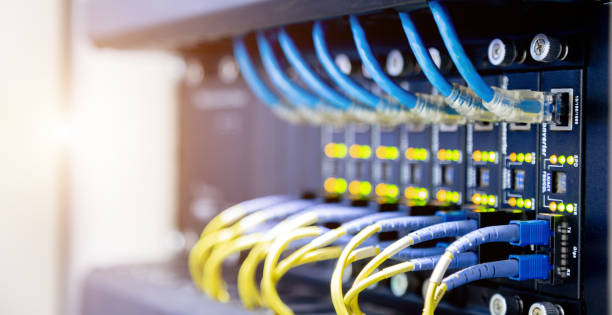How servers are connected in Data Center

Servers in a data center are connected in a structured and efficient manner to ensure reliable communication, data exchange, and resource sharing. The network architecture and topology within a data center play a crucial role in maintaining high availability, low latency, and optimal performance.
Here are some common methods used to connect Servers in a Data Center:
- Network Switches:
Network switches are central components in a data center network. They act as traffic managers, directing data packets between servers and other network devices. Switches use Ethernet technology to create a network fabric, enabling communication between servers and other devices at high speeds. There are different types of switches, including access switches, distribution switches, and core switches, each serving different roles in managing network traffic.
- Rack-Level Connectivity:
Servers are often organized in racks within data center cabinets. Each rack contains multiple servers, and these servers are connected to local switches within the rack. These switches handle communication within the rack, reducing the need for traffic to travel long distances across the data center.
- Ethernet Cabling:
Ethernet cables are used to connect servers to network switches. These cables carry data between servers and the switches, providing the physical link for data transmission. Depending on the data center's infrastructure and requirements, various Ethernet standards, such as 1 Gigabit Ethernet, 10 Gigabit Ethernet, 40 Gigabit Ethernet, and 100 Gigabit Ethernet, might be used to accommodate different levels of data traffic.
- Virtual LANs (VLANs):
VLANs are used to logically segment the network within a data center. By creating separate VLANs, different groups of servers can be isolated from each other, improving security and network performance. VLANs can be configured to separate different types of traffic, such as storage traffic, management traffic, and application traffic.
- Redundant Paths:
To ensure high availability and minimize downtime, data centers often implement redundant network paths. This involves setting up multiple network switches and cables to create alternate routes for data in case of hardware failure. This redundancy helps prevent a single point of failure that could disrupt network communication.
- Network Fabric Architecture:
Modern data centers often use network fabric architectures that provide a high-bandwidth, low-latency interconnect between servers and network switches. Technologies like spine-and-leaf architecture and software-defined networking (SDN) enable efficient scaling, flexibility, and management of the network infrastructure.
- Fiber Optic Cabling:
For longer distances or higher-speed connectivity, fiber optic cables are used. These cables use light to transmit data and can provide significantly higher bandwidth compared to traditional copper Ethernet cables.
- InfiniBand:
In some high-performance computing (HPC) environments, InfiniBand is used as an interconnect technology. It offers low latency and high bandwidth, making it suitable for applications that require intense data processing and communication.
The specific connectivity architecture within a data center can vary based on factors such as the data center's size, requirements, budget, and the technologies it employs. The goal is to create a network infrastructure that optimally supports the communication needs of the servers and services hosted within the data center.
Thank You
